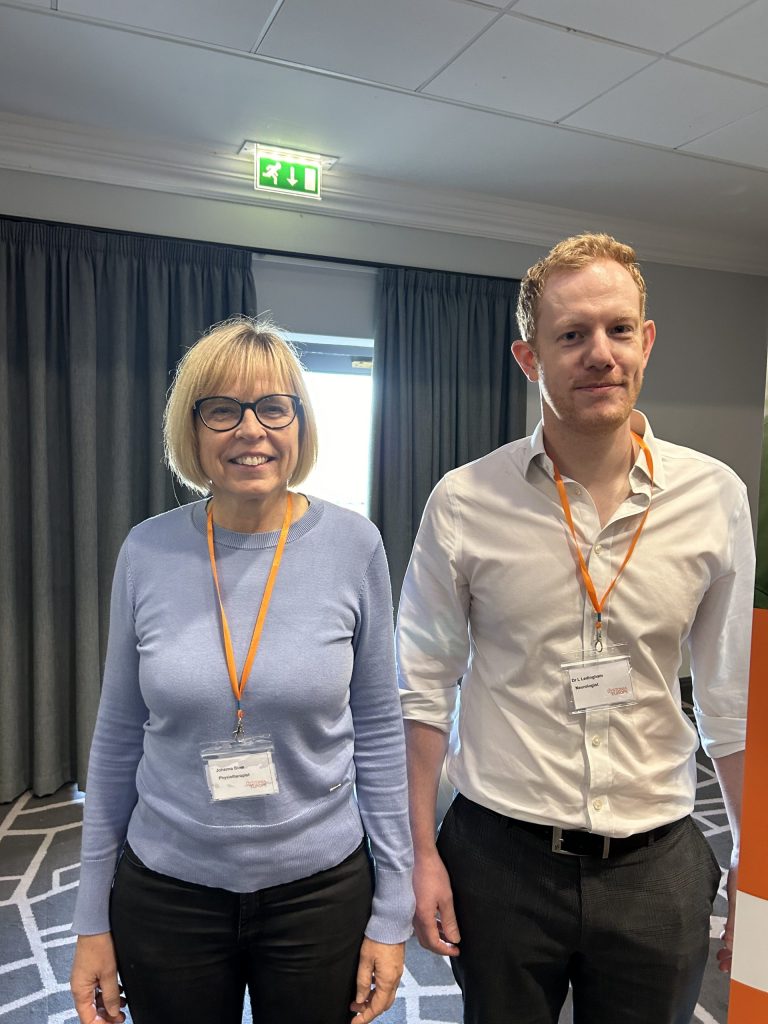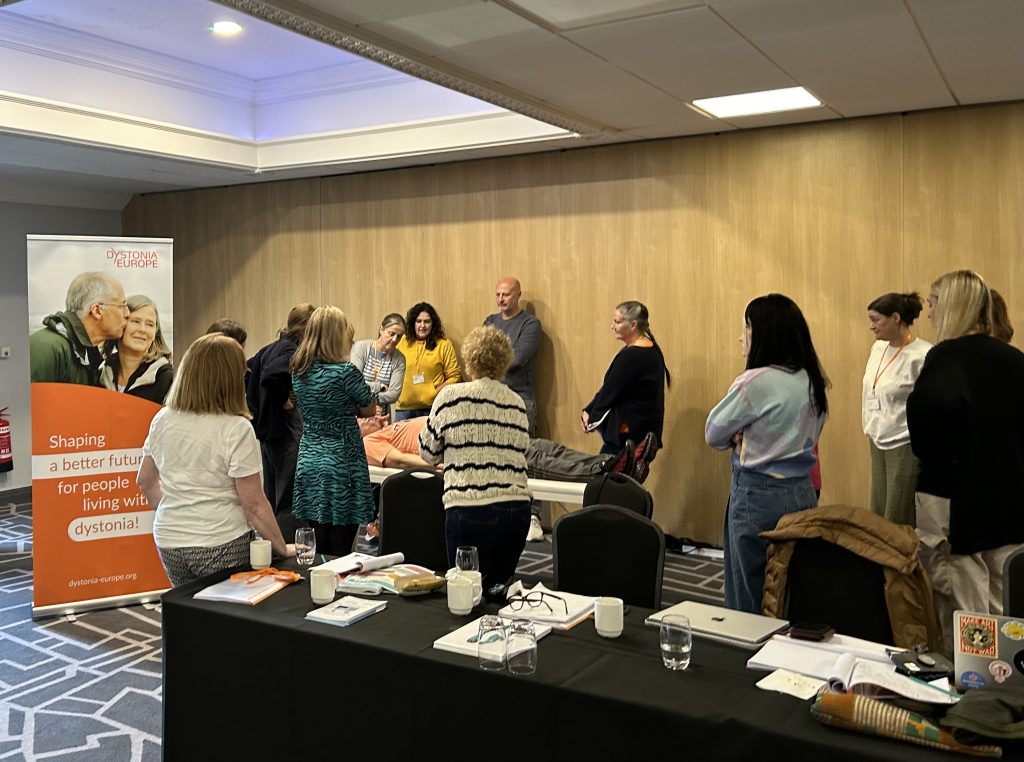A one-day course about physiotherapy and cervical dystonia for physiotherapists was organised on Friday at the Silverlink Hotel outside of Newcastle upon Tyne in the UK.
22 physiotherapists, most of them from the local area but also from all over the UK, had come for the course.
Gill Ainsley, Secretary and Vice President of Dystonia Europe (DE) welcomed the participants. She explained that this inaugural course was funded by monies raised by the now closed charity ADDER who raised awareness and helped dystonia patients for more than twenty years and was based in the northeast of England. The money raised was donated to Dystonia Europe with the criteria that it is used to train physiotherapists in treating dystonia. As the money was raised and donated by people in the northeast of England it was appropriate to host the first course in the region.
Dystonia Europe Executive Director Monika Benson pointed out to the group that one of the main activities of DE is to support and add value to the work of the national member associations. “I hope this course will benefit dystonia patients in the local area as well around the UK” Monika said.
Dr David Ledingham from the University Hospital of Newcastle gave a comprehensive lecture on dystonia, what it is, causes, genetics, BTX treatment and how it works.
Physiotherapist Johanna Blom from Skåne University Hospital, in Malmö, Sweden, continued with her part which included a live assessment and analysis of 2 dystonia patients. After lunch focus was on treatment strategies and demonstration of exercises together with the patients who had joined.

Physiotherapist Johanna Blom and Dr David Ledingham
Johanna said: “The home training program is important to make the patient feel you can influence your situation – it is empowering.” She stressed the importance of the team around the patient: neurologist, physiotherapist, occupational therapist, psychologist, counselor/social worker, nurse. She also demonstrated her platform
https://physioexercise.org/en?locale=en with over 100 exercises that can be used by physiotherapists for free in order to create individualised exercise programs for their cervical dystonia patients.
She finished the day by showing a twisted tree on the shore of a beautiful lake in Sweden and said: “Just like this tree, you see the beauty even if it is twisted.
And tell your patients to see their beauty in spite of dystonia – they are a person with dystonia but they are not dystonia “.
There were lots of questions and discussions and it was great to see so many physiotherapists interested in dystonia gathered in the same room.

Feedback shows that we have sparked the interest and most participants wish for more physiotherapy training in the field.
We thank Graham for his contribution as a demonstration patient as well as Gill who was a demonstration patient and the local organiser of this workshop. Gill is already planning the next course!
Monika Benson
Executive Director
Dystonia Europe
